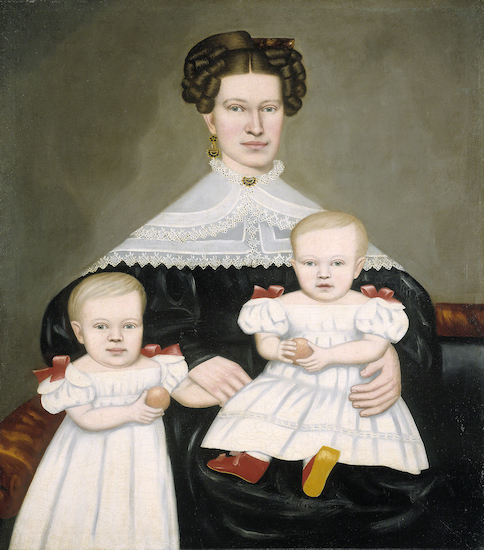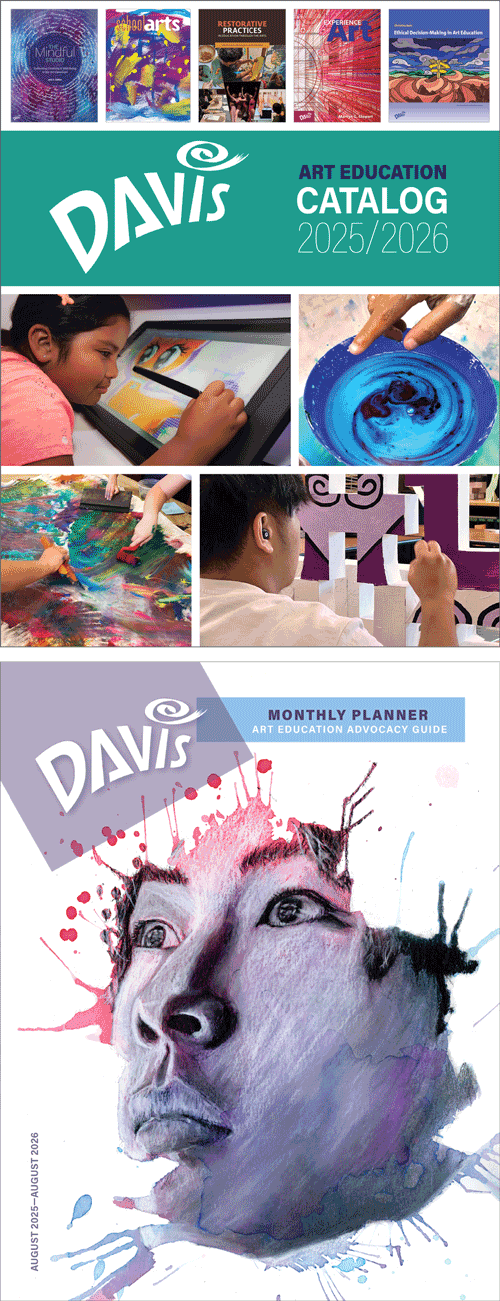Artist Birthday: Erastus Salisbury Field
Erastus Salisbury Field was an essentially self-taught painter who produced portraits, landscapes, and history subjects in his long career. He was one of the most successful of the great early American tradition of the limner, a painter who traveled town to town for commissions.
Artist birthday for 19 May: Erastus Salisbury Field (1805–1900, United States)
Erastus Salisbury Field was a successful limner who later in life took up photography to help him with his portrait paintings.
 |
| Erastus Salisbury Field, Mrs Paul Smith Palmer and Her Twins, 1835 or 1838. Oil on canvas, 97.8 x 86.3 cm. © 2025 National Gallery of Art, Washington. (NGA-P0983) |
Because Field could make more money the more portraits he was able to paint, he chose to paint in the flat, simplified limner style rather than the Academic style he had begun to learn under Morse in New York. He found that his rural patrons preferred the simplified Visionary style to the romantic, Grand Manner style seen in portraits by east coast artists like Gilbert Stuart (1755–1828).
Mrs Paul Smith Palmer, a native of Stonington, Connecticut as was her husband, moved to Stockbridge, Mass. in 1824 when she married her cousin. Like the portraits of most self-taught artists, Mrs Palmer's features are rendered in a believable likeness, though the even lighting flattens the facial features in this portrait, and the bodies. Field also concentrates on other features' details that would help the viewer identify the sitter, such as her fancy hairdo, to which he devoted much detail in the reflected light, even though there is generally no sense of a consistent light source in the painting. Light and shadow do not define form, although, unlike most Visionary artists, neither do contour lines. His weakness in depicting anatomy (look at the hands) is camouflaged by her luxurious dress, to which, once again, the Visionary artists devoted much time to detail of the lace collar that falls to the dropped shoulder. The gigot (leg of mutton) sleeves complete the camouflage of the body underneath the clothes. His attempts at textures is less successful than his obsessive detail devoted to the collar and hairdo.
There is a long tradition of "folk art" all over the world. Folk art used to be the term that covered a broad range of art produced by people who were self-taught, or had little training in art at all. Folk art is sometimes divided into two genres: 1) the art of self-trained artists, who, although not producing painting or sculpture in a style that reflects art school training, earn a living with their art; and 2) the art of of those with little or no training whatsoever who produce works of art primarily for the joy of creating.
In the United States, the long tradition of self-trained professional artists stretches back to the colonial period. Because the first American art schools only appeared during the early 1800s, many artists who did not live in urban areas had no access to professional artists for training. Self-trained artists who traveled from town to town to make a living painting (usually) portraits were called limner. Limner was a Medieval British mispronunciation of the word "illuminator", which was an illustrator of manuscripts. The limner tradition persisted in American art through the 1800s, particularly after the mass settlement of the Western territories.
Erastus Salisbury Field was born in western Massachusetts, growing up in the town of Leverett (near Amherst). Field's parents discerned a childhood interest in oil painting and placed him for instruction in the studio of a local "noted artist." At nineteen, he went to New York and studied for three months under the Grand Manner painter (and inventor of the Morse Code and single wire telegraph) Samuel F.B. Morse (1791–1872). After that short internship, Field is thought to have been mostly self-taught. Around 1824 he hit the road with his oil paints, hawking his portraiture in Massachusetts and Connecticut. In the 1840s Field learned the Daguerreotype photography process, and used it to paint group portraits by cutting and pasting Daguerreotype portraits together. From 1841 on he lived mostly in New York, where he added naively conceived paintings of biblical and historical subjects to his body of work, mostly because through those he could express his anti-slavery views.

Comments